The Pacific Ocean is a vast and mysterious expanse, teeming with life forms both known and yet to be discovered. Within its depths, some of the most intriguing and elusive creatures use camouflage as a survival tactic. Among them, the mimic octopus stands as a master of disguise, bewildering predators and researchers alike with its adaptive abilities. This article delves into the fascinating world of the mimic octopus and explores how this shapeshifting marvel thrives beneath the waves.
Introduction to the Mimic Octopus
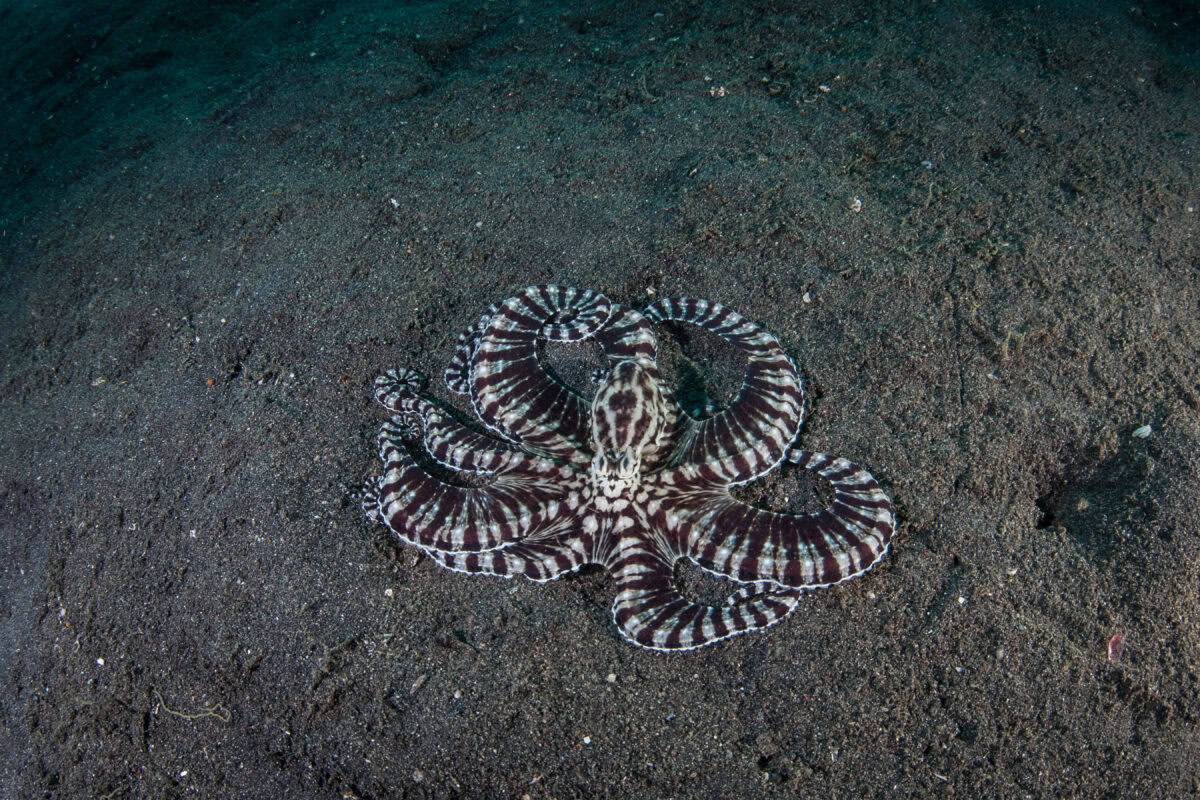
The mimic octopus, scientifically known as *Thaumoctopus mimics*, was only discovered in the late 20th century. Native to the tropical regions of the Indo-Pacific, this cephalopod possesses an astonishing ability to imitate other sea creatures. This unique talent not only provides camouflage but also serves as a sophisticated survival strategy, often enabling the mimic octopus to escape predators by posing as more dangerous animals.
Unveiling Its Mysterious Habitat
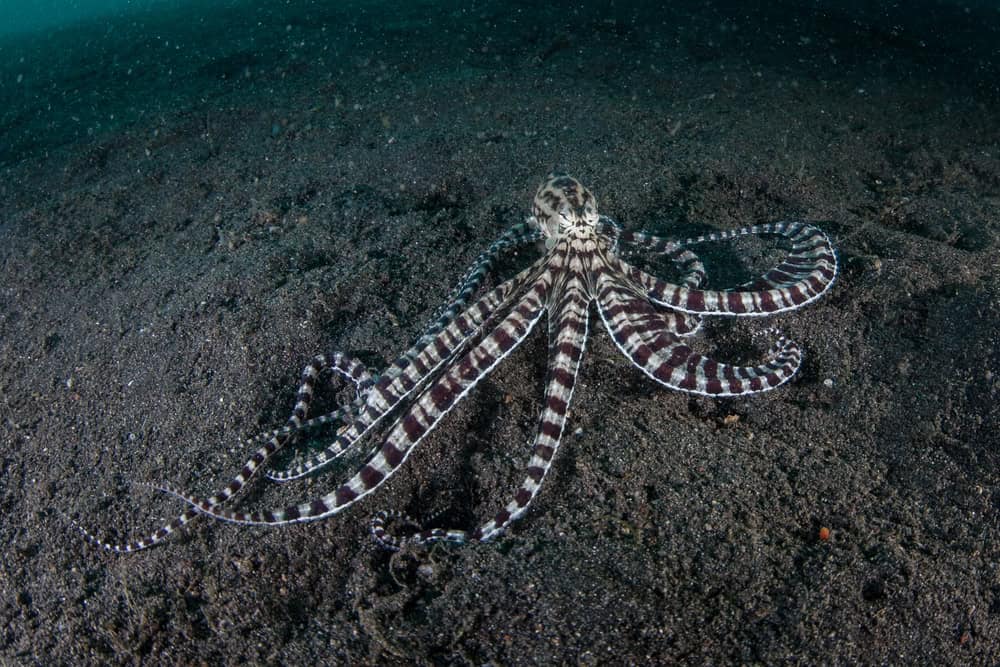
The mimic octopus thrives in murky, shallow waters where visibility is limited, usually around depths of 10 to 15 meters. Its environment is rich with sandy bottoms and sparse corals, ideal for its camouflaging behavior. These habitats are crucial as they offer both food sources and numerous options for shelter.
Understanding Its Physical Characteristics
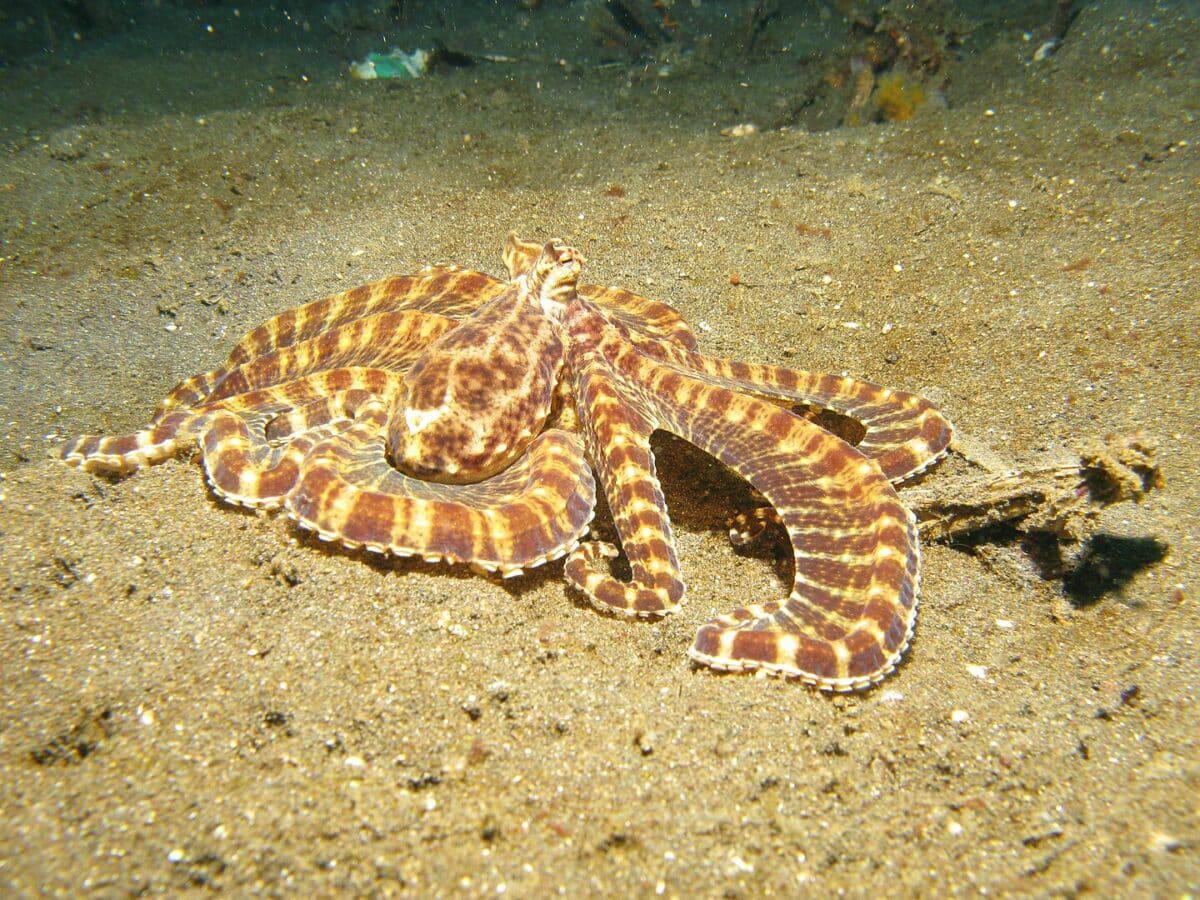
The mimic octopus is typically small, with arms that can reach a length of up to 60 centimeters. It features a distinctly slender body, allowing for swift and agile movements. Its skin is highly flexible, and equipped with specialized cells called chromatophores, enabling it to change color and texture at will, blending seamlessly with its surroundings.
The Art of Imitation
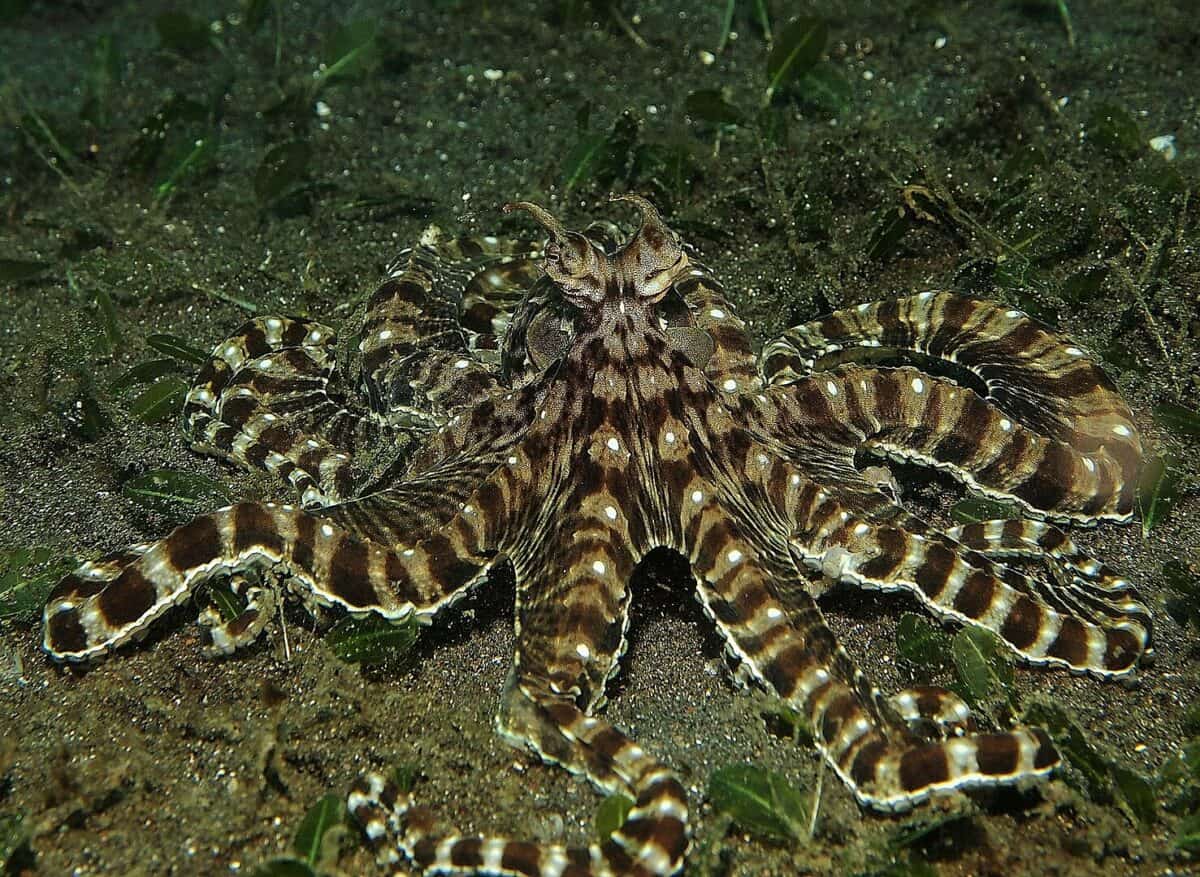
What sets the mimic octopus apart is its ability to assume the form of as many as 15 different marine species, including lionfish, sea snakes, and flatfish. By contorting its body and adjusting its coloration, it convincingly imitates these creatures, deterring predators who might otherwise consider it prey. This ability to mimic is not just about appearance; it also involves replicating the behaviors and movements of its dangerous look-alikes.
The Camouflage Advantage

Camouflage provides the mimic octopus with several advantages. Primarily, it serves as a defense mechanism against predators such as sharks and larger fish. By imitating potentially harmful sea creatures, the mimic octopus can avoid confrontation entirely. Additionally, it uses camouflage to ambush prey, blending into the ocean floor until the opportune moment to strike.
Behavioral Patterns and Social Structure

The mimic octopus is generally solitary, relying on its camouflage and mimicry to interact with its environment rather than forming social bonds. Its behavior is largely dictated by survival instincts, maintaining a low profile to conserve energy and avoid unnecessary risks. Observations suggest that mimicry is a learned behavior, developed over time and honed through experience.
Feeding Practices

Typically, the diet of the mimic octopus consists of small crustaceans, fish, and worms. Its hunting strategy involves stealth and surprise, often employing its camouflaging skills to approach prey unnoticed. Once within reach, the octopus skillfully snatches its target using its dexterous arms, equipped with sensitive suction cups.
Reproduction and Life Cycle
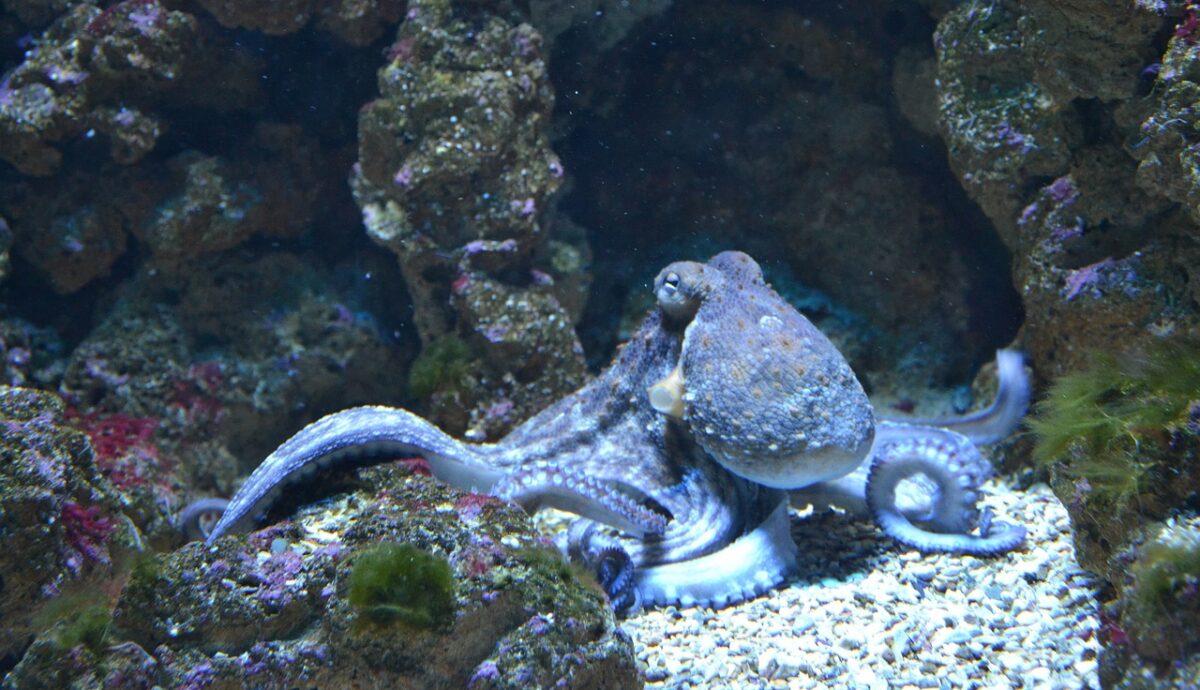
The reproductive cycle of the mimic octopus is not extensively documented, but it is presumed to follow a pattern similar to other octopus species. After mating, the female lays a clutch of eggs and guards them diligently until they hatch. The young are vulnerable, relying on their innate camouflaging abilities from an early age to evade predators.
Current Conservation Status

While the mimic octopus is not currently listed as endangered, its habitats are increasingly threatened by human activities such as coastal development and pollution. Conservation efforts are essential to ensure the survival of these fascinating creatures and the delicate ecosystems they inhabit.
The Role of the Mimic Octopus in Marine Ecology
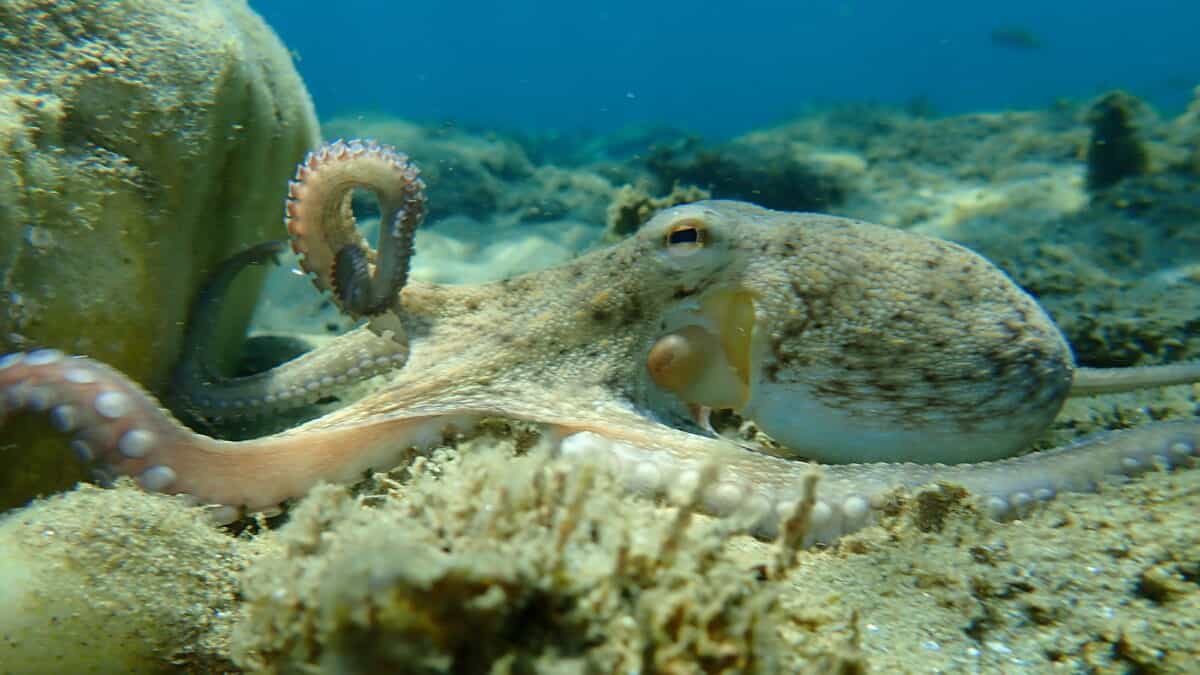
The mimic octopus plays a vital role in marine ecosystems, contributing to the balance of predator-prey dynamics. By keeping the population of its prey in check, it helps maintain the health and stability of the oceanic food web. Furthermore, it serves as an indicator species for scientists studying environmental changes in the Indo-Pacific regions.
Technological Advances in Marine Biology
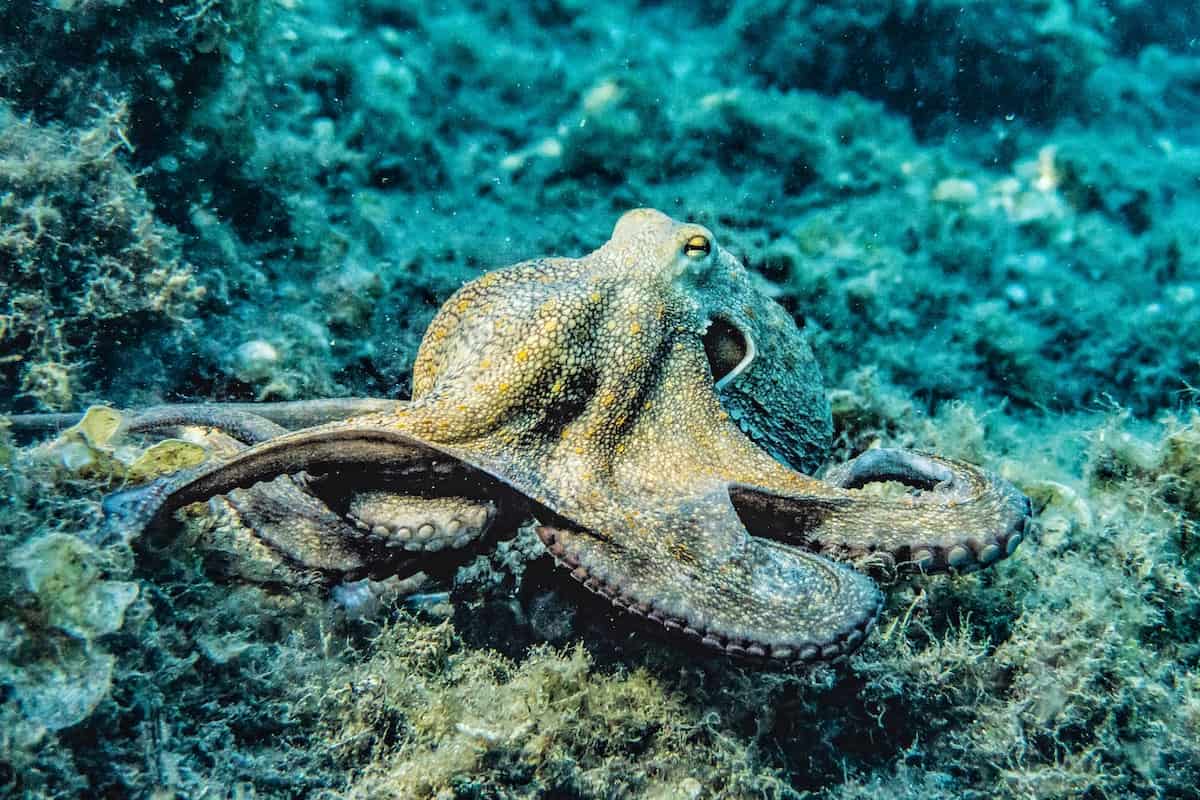
Advancements in marine biology and technology have been pivotal in studying the mimic octopus. Improved underwater cameras and diving equipment allow scientists to observe these creatures in their natural habitat, facilitating a better understanding of their behaviors and ecological significance.
Conclusion: The Marvel of Marine Evolution

The mimic octopus stands as a testament to the marvels of marine evolution, showcasing an intricate blend of intelligence, adaptability, and survival strategy. Its mastery of mimicry and camouflage continues to captivate scientists and enthusiasts alike. As we unravel the mysteries surrounding this enigmatic cephalopod, efforts to preserve its delicate ecosystems remain crucial, ensuring that future generations can witness the wonder of the most camouflaged creature lurking in Pacific waters.
- 10 Animals That Shaped Human Evolution - August 23, 2025
- These 12 Creatures Are More Lethal Than Sharks - August 23, 2025
- 10 Animals That Are Older Than Dinosaurs - August 23, 2025

